About Brahmo Samaj
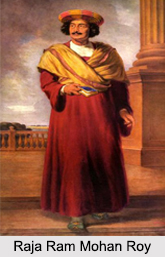 Brahmo Samaj was one of the most prominent religious groups in India during the eighteenth century. The eminent Bengali educationalist and social reformer, Raja Ram Mohan Roy founded the Brahmo Sabha in 1828 and it became famous as Brahmo Samaj later. The Brahmo Samaj was actually a community of people, who gathered on a regular basis to discuss or worship the Eternal, Immutable Supreme Being, Author and Preserver of the Universe. The motto of the Brahmo Samaj was not to worship the Eternal under any name, designation or title. The literary meaning of the word `Brahmo` is "one who worships Brahman" and the word `Samaj` means a "community of men".
Brahmo Samaj was one of the most prominent religious groups in India during the eighteenth century. The eminent Bengali educationalist and social reformer, Raja Ram Mohan Roy founded the Brahmo Sabha in 1828 and it became famous as Brahmo Samaj later. The Brahmo Samaj was actually a community of people, who gathered on a regular basis to discuss or worship the Eternal, Immutable Supreme Being, Author and Preserver of the Universe. The motto of the Brahmo Samaj was not to worship the Eternal under any name, designation or title. The literary meaning of the word `Brahmo` is "one who worships Brahman" and the word `Samaj` means a "community of men".
Brahmo Samaj was established primarily because of the efforts made by Raja Ram Mohan Roy. Ram Mohan was born into a world of diverse cultural influences, as his father was a follower of Chaitanya and his mother worshipped the divine female power. At a very young age, Roy questioned the orthodox beliefs of Hinduism and he published his religious views in a Persian tract, named Tohfat al-Muwabhiddin (A Gift to Deists) in 1804. This was the first time he made public his criticisms of idolatry and polytheism. He strongly opposed the rite of Sati (the immolation of Hindu widows on their husband`s funeral pyre). This practice was particularly frequent among the higher castes in Bengal. Before the Brahmo Samaj, Roy attempted to establish an organisational base for his ideas in 1815 by founding the Atmiya Sabha (Friendly Association). This private society can be referred to as the predecessor of the Brahmo Samaj. The members of Atmiya Sabha used to recite Hindu scriptures, sing hymns and hold discussions on religions and social issues, on a regular basis. However, the society was ceased in 1819 and there was no organisation for Roy for the next nine years.
After a long period of nine years, Ram Mohan Roy and his friends (Brajosundar Mitra and others) established the Brahmo Sabha in 1828, on Chitpore Road Kolkata. The Sabha met for the first time on 20th August, 1828. However, it was publicly inaugurated on 11th Magh or 23rd January 1830. The members of Brahmo Samaj celebrate the former date as Bhadrotsab and the latter as Maghotsab. The members of the Sabha used to gather every Saturday evening and first chant the Vedic hymns in Sanskrit. They also used to chant the hymns translated into Bengali, a sermon in Bengali and sing theistic hymns. Though anyone could attend the Sabha, most of the members of Brahmo Sabha were the Bengali Brahmans. There were no norms for membership, creed and no formal organisation for the Sabha during that period.
The main idea of Ram Mohan Roy behind establishing the Brahmo Samaj was to purify Hinduism and to preach the worship of one God. The Samaj was based on those teachings of the Vedas and the Upanishads and also those of other religions, which had some rational basis. The principles of Brahmo Sabha were first sketched by Ram Mohan Roy in a Trust Deed filed in 1830. A reaffirmation of egalitarianism, Roy`s concept of the deity, `the Eternal Unsearchable and Immutable Being who is the Author and Preserver of the Universe`, a prohibition of all forms of idolatry and sacrifice and a ban on criticism of other religious beliefs and practices, etc. were included in the Deed. However, Raja Ram Mohan Roy did not elaborate on these principles. He died in 1833.
After the death of Raja Ram Mohan Roy, the organisation of Brahmo Samaj was revived by Maharshi Debendranath Tagore, who also belonged to a Brahman family. He formed the Tattvabodhini Sabha (Truth-Teaching Association), in 1838. It was a society that held weekly religious discussions and monthly worship. Like Roy, he and his society also accepted Vedanta, however, he emphasised more on the superiority of Hinduism. He soon gained a major voice in the propagation of theistic Hinduism. However, though the Tattvabodhini Sabha was quite successful, Tagore decided to revive the Brahmo Sabha.
However, the Brahmo Samaj soon witnessed a lot of conflicts within its members. In 1857, a non-Brahmin social reformer, Keshub Chandra Sen joined the Calcutta Brahmo Samaj and the admittance of Keshub Chandra Sen caused significant stress in the Brahmo movement. Many old Brahmin members started to leave the Samaj and its institutions, mainly due to his dictatorial ways. All these led to the first division of Brahmo Samaj that came into public between August, 1865 and November, 1866. Many small groups started to claim themselves as Brahmo during that period and the most notable among these groups was the "Brahmo Samaj of India". The historians refer this period to as the "First Schism".
The Brahmo Samaj movement is considered one of the most powerful and influential religious movements during the eighteenth century in India. Starting its journey in Calcutta, the Samaj soon spread its idea to the other parts of India. The idea was spread in a period, when the British rulers were expanding the reach of Indian railways all over India and the communication system was also improved a lot. With the help of the easy communication, the Brahmo Samaj movement quickly spread its ideas into the other prominent presidencies like Punjab, Sind, Bombay and Madras. In 1846, a branch of Brahmo Samaj was established in Dacca (present day Dhaka, the capital of Bangladesh) and during the 1850s and 1860s; several young Bengalis got influenced by the Brahmo doctrine.
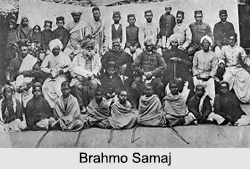 By the 1860s, the influence of Brahmo Samaj started to spread in South India. A learned and well educated Brahman of Cuddalore, named Sridharalu Naidu became influenced with the ideology of the Brahmo Samaj and he went to Calcutta to know further about the Brahmos. After spending a year studying Brahmo ideology, Naidu returned to South India and dedicated himself to spread the Brahmo philosophy. However, though Naidu did not get significant success initially, a visit of Keshub Chandra Sen to Madras in 1864 helped a lot in the formation of Brahmo Samaj in Madras. The Brahmo Samaj was first established as Veda Samaj in Madras before Naidu transformed it to Brahmo Samaj in both name and content, during the later half of 1860s. Naidu also travelled throughout the South India and helped founding new branches of Brahmo Samaj with able help from Doraiswami Iyengar. The Brahmo Samaj was founded in the places like Salem, Coimbatore, Bangalore, Mangalore, etc.
By the 1860s, the influence of Brahmo Samaj started to spread in South India. A learned and well educated Brahman of Cuddalore, named Sridharalu Naidu became influenced with the ideology of the Brahmo Samaj and he went to Calcutta to know further about the Brahmos. After spending a year studying Brahmo ideology, Naidu returned to South India and dedicated himself to spread the Brahmo philosophy. However, though Naidu did not get significant success initially, a visit of Keshub Chandra Sen to Madras in 1864 helped a lot in the formation of Brahmo Samaj in Madras. The Brahmo Samaj was first established as Veda Samaj in Madras before Naidu transformed it to Brahmo Samaj in both name and content, during the later half of 1860s. Naidu also travelled throughout the South India and helped founding new branches of Brahmo Samaj with able help from Doraiswami Iyengar. The Brahmo Samaj was founded in the places like Salem, Coimbatore, Bangalore, Mangalore, etc.
The Brahmo Samaj has led a number of social and religious reform movements. The Samaj actively participated in almost all social reform movements that include abolition of the caste system and dowry system, emancipation of women and improving the educational system. The Brahmo Samaj also reflected the ideologies of the Bengal Renaissance. The Samaj actively opposed the religious practice of Sati in Hinduism and also supported widow remarriage movement led by Pandit Ishwar Chandra Vidyasagar. In the contemporary period, the Brahmo Samaj is concentrated on making certain social reforms. These reforms include the denunciation of polytheism, reform of educational system, spread of knowledge by universal access to information, legal reform especially in fields of personal and secular law, opposing corrupting influences like intoxicants, television, etc.
The doctrine of Brahmo Samaj was propounded by Raja Ram Mohan Roy and later enriched by the other members of the Samaj. Brahmo Samaj laid emphasis on the worship of one formless omnipresent God. Ram Mohan never claimed that he had founded a new religion different from Hinduism. However, he always opposed the evil practices of Hinduism. Ram Mohan Roy strongly cited scriptural sources to justify his contention that Sati was not required by Hindu law and was instead an erroneous accretion. He described Sati as an example of degenerated Hinduism. Roy was adhered to theism and to him; God and his presence were proven by the complexity of reality. Roy envisioned God as the "almighty superintendent of the universe". He also strongly opposed the debarring of women from education and believed that the elaborate and useless rituals, idolatry and polytheism should disappear. There are certain doctrines of Brahmo Samaj that are still followed by the Brahmos. The members of Brahmo Samaj have no faith in any scripture as an authority; they have no faith in Avatars; they denounce the polytheism and idol-worship; they oppose the caste restrictions; and they also make faith in the doctrines of Karma and Rebirth optional.
The Brahmo Samaj has played a significant role in the renaissance of India and the roots of much of the modern thinking in India can be traced back to the Brahmo Samaj movement. Most of the renowned and eminent social reformers and thinkers of the eighteenth century were directly or indirectly connected to the Brahmo Samaj. The Nobel Laureate, Rabindranath Tagore was one of the luminaries of the Brahmo Samaj.
Doctrines of Brahmo Samaj
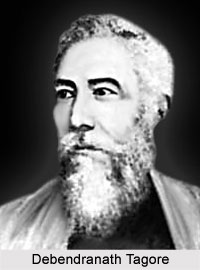 Brahmo Samaj is considered one of the most influential and powerful organisations that propelled a significant socio-religious movement in India during the British period. The organisation got huge popularity among the newly English educated elite class of India and made a huge impact on the contemporary Indian society. Brahmo Samaj operated with certain aims and objectives and propagated its own views and doctrines on various social and religious issues. The Brahmo Samaj was founded and led by the Raja Ram Mohan Roy and the sketching of the Samaj`s doctrines was also done by Ram Mohan Roy. The doctrines of Brahmo Samaj became the basic ideology for many more socio-religious movements that occurred in different parts of India during the nineteenth and twentieth century.
Brahmo Samaj is considered one of the most influential and powerful organisations that propelled a significant socio-religious movement in India during the British period. The organisation got huge popularity among the newly English educated elite class of India and made a huge impact on the contemporary Indian society. Brahmo Samaj operated with certain aims and objectives and propagated its own views and doctrines on various social and religious issues. The Brahmo Samaj was founded and led by the Raja Ram Mohan Roy and the sketching of the Samaj`s doctrines was also done by Ram Mohan Roy. The doctrines of Brahmo Samaj became the basic ideology for many more socio-religious movements that occurred in different parts of India during the nineteenth and twentieth century.
Ram Mohan Roy was counted amongst the most eminent educationalists and social reformers of nineteenth century in Bengal. He was adhered to theism and believed in worshipping only one formless God. He was also against all the evil rituals that were practised in Hinduism. Ram Mohan Roy`s personal views were nicely reflected in the doctrines of Brahmo Samaj and in fact, the base of the Brahmo philosophy was built by Roy. Ram Mohan Roy sketched the doctrines of Brahmo Samaj for the first time in a Trust Deed that was filed in 1830. According to the deed, the Brahmo Samaj would operate for a reaffirmation of egalitarianism and would worship only one deity, who is `the Eternal Unsearchable and Immutable Being who is the Author and Preserver of the Universe`. Roy also included a prohibition of all forms of idolatry and sacrifice and a ban on criticism of other religious beliefs and practices, in the deed. However, Ram Mohan Roy did not elaborate on these principles further.
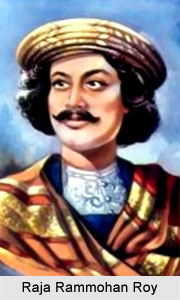 The doctrines of Brahmo Samaj sketched by Raja Ram Mohan Roy were based in the belief that once Hinduism returns to its past purity and once proper belief is reestablished, the erroneous customs such as Sati, the debarring of women from education, elaborate and useless rituals, idolatry and polytheism would disappear. The vision was based on the Vedas, Upanishads and Vedanta-Sutra and the validity of these texts were elaborated by Ram Mohan Roy in the doctrines of Brahmo Samaj.
The doctrines of Brahmo Samaj sketched by Raja Ram Mohan Roy were based in the belief that once Hinduism returns to its past purity and once proper belief is reestablished, the erroneous customs such as Sati, the debarring of women from education, elaborate and useless rituals, idolatry and polytheism would disappear. The vision was based on the Vedas, Upanishads and Vedanta-Sutra and the validity of these texts were elaborated by Ram Mohan Roy in the doctrines of Brahmo Samaj.
After Ram Mohan Roy departed for England in November, 1830 and died in 1833, the leadership of Brahmo Samaj was taken by Debendranath Tagore. Tagore fought against the Christian missionaries and also propagated theistic Hinduism. Though he accepted Vedanta, he emphasised on the superiority of Hinduism and brought about a degree of structure and ideological coherence to Brahmo Samaj. He wrote the Brahma Covenant, which was a creedal statement listing the basic obligations of membership of Brahmo Samaj. He also revised the Hindu life-cycle rituals in 1861 and gave them a particular Brahmo form.
Under the leadership of Keshab Chandra Sen, the doctrines of Brahmo Samaj underwent changes and a sense of militancy was introduced to the operations of the Samaj. Restlessness, a sharp rejection of the older values and militancy became the features of Brahmo Samaj. The Brahmos abandon the caste system and the sacred thread worn by Brahmans and also refused to practise temperance. They worked for the equality of women and started to strive for social radicalism. The first schism of Brahmo Samaj also occurred during that period, mainly because of the changed philosophies of Keshab Chandra Sen and his followers. However, the Adi Brahmo Samaj led by Debendranath Tagore continued to follow the religious doctrines of Brahmo Samaj and acted like a religious organisation dinned with rituals and theology. This section of Brahmo Samaj was not inclined to social reform and devoted much of its attention to the defence of Hinduism from the missionary criticisms.
The doctrines of Brahmo Samaj laid major emphasis on the worship of one formless omnipresent God, who has no name, designation or title. The Samaj always opposed the evil practices of Hinduism and strongly cited scriptural sources to justify their contention that the practices were not required by Hindu law. They also described them as erroneous accretions. The Brahmo doctrines believe that God and his presence are proven by the complexity of reality. The philosophy envisions God as the "almighty superintendent of the universe". According to the doctrines of Brahmo Samaj, the debarring of women from education should be opposed and the elaborate and useless rituals, idolatry and polytheism should disappear. The Brahmo philosophy has no faith in any scripture as an authority; has no faith in Avatars; the philosophy denounces the polytheism and idol-worship and also opposes the caste restrictions.
Effects of The Brahmo Samaj on Indian Society
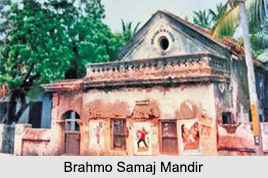 The unfolding of Hindu acculturative movements began with the initiative of a Bengali Brahman, Ram Mohan Roy (1772-1833). When he was born, he saw a world of diverse cultural influences. His father`s family followed Chaitanya, while his mother was a worshipper of divine female power. Professionally the Roys served the Muslim rulers and so they belonged to the Persianized section of the Hindu elite. This tie to non-Hindu government gave them a somewhat lowered status and they were not counted among the purest of the Brahmanical community. Ram Mohan Roy started to learn Bengali as his mother tongue and simultaneously studied Persian in order to prepare for the future employment and Sanskrit also befitted his priestly rank in future.
The unfolding of Hindu acculturative movements began with the initiative of a Bengali Brahman, Ram Mohan Roy (1772-1833). When he was born, he saw a world of diverse cultural influences. His father`s family followed Chaitanya, while his mother was a worshipper of divine female power. Professionally the Roys served the Muslim rulers and so they belonged to the Persianized section of the Hindu elite. This tie to non-Hindu government gave them a somewhat lowered status and they were not counted among the purest of the Brahmanical community. Ram Mohan Roy started to learn Bengali as his mother tongue and simultaneously studied Persian in order to prepare for the future employment and Sanskrit also befitted his priestly rank in future.
The Bramho Samaj questioned orthodox beliefs since he was very young and consequently came into conflict with his parents. The year after his father`s death in 1803, he published his religious views in a Persian tract titeled Tohfat al-Muwabhiddin (A Gift to Deists, 1804). In this book, Ram Mohan Roy publicly announced his criticisms of idolatry and polytheism. He initially researched in the world of private banking and from there he was drawn into the colonial milieu, for his clients included several English officers. He began to learn English and spent around nine years working for the East India Company. He retired from the company in 1814 and afterwards involved into the issues of social custom and religious belief.
The most dramatic question of Ram Mohan Roy `s varied career that made him thoughtful for the remainder of his life was the ritual of sati. The immolation of Hindu widows on their husbands` funeral pyre, though was not practiced widely throughout the Hindu community, but it was strong among the higher castes in Bengal. Roy had been deeply upset, when one of his female relatives committed sail. In 1818, he published the book A Conference Between an Advocate for and an Opponent Of the Practice of Burning Widows Alive. Here, he cited scriptural sources to validate his contention that sati was not required by Hindu law and was instead an incorrect accumulation; an example of degenerated Hinduism. Orthodox Hindus were shocked by his disapproval of what they considered a suitable and necessary ritual. The effects of Bramho Samaj on Indian society, brought into several positive changes amidst the countrymen.
Englishmen, particularly Christian missionaries joined in this argument thus calling for a government ban on sati. Finally in 1829, after much hesitation, the British-Indian government banned the ritual of sati. The law was now challenged by orthodox Hindus and placed before the Privy Council for final decision. Ram Mohan Roy traveled to England to give evidence in this case and also before Parliamentary hearings on the proposed Reform Act. It was on this trip that he unfortunately died and was buried in England. Sati as an issue led the Bramho Samaj into the general question of women`s rights, particularly the need for women`s education. The other major role of his thinking revolved around the explanation of proper Hindu belief.
The involvement of Bramho Samaj in to theism and his rejection of idolatry, Brahman priests, and their rituals, drew the basic outlines of his reconstructed Hinduism; for, to him, God and his existence can be proved by the complexity of reality. Alike the European rationalists, Roy envisioned God as the `almighty superintendent of the universe`. This rational and highly decent vision of Hinduism had been lost in the previous centuries through the unfortunate influence of the Brahman priests. The Bramho Samaj led Hinduism to its past purity.
Once this proper belief was re-established by Bramho Samaj, heinous customs such as sati, the restriction of women from education, detailed and useless rituals, admiration and polytheism would disappear. Ram Mohan Roy relied on his vision of explanation of Hinduism on the Upanishads, Vedas, and the Vedanta-Sutra. His own writings focused on the validity of these texts and the revised Hinduism that they justified. With this approach he transformed the erroneous activities of Hinduism into mere errors caused by ignorance. He also tried to justify his arguments on the ground of reason and social value. For Roy, religion was never judged only on its own internal scriptural proof, but it must also be looked into and justified by reason and thus be free of contradiction and functioning to sustain a valuable social order.
Ram Mohan Roy substituted scriptures for priests as the sources of proper knowledge. This doctrine enhanced the practice of translations of the Upanishads and of the Vedanta-Sutras into the vernacular languages as well as into English. The movements of Bramho Samaj also increased use of printing to make these texts and his personal writings available to all who wished to read them. This ended the prohibition against any but the first three varnas from reading the most sacred of Hindu literature. Now women, peasants, untouchables, and non-Hindus were under compulsion to read and study the sacred scriptures.
In 1821, while struggling with the Serampore missionaries, Ram Mohan Roy established his first journal, Brahmmunical Magazine. This bilingual magazine promoted his opinions to a literate audience. Soon a number of individuals and associations had their own journals, tracts, and translations. Religious debates were held in public by anyone who desired to do so. Although orthodox leaders complained about Ram Mohan Roy`s arrogance in assuming he could describe proper Hindu belief and custom. However, they had no option but to meet him in the new ground of public religious disagreement. The educational reforms by Ram Mohan Roy cannot go unnoticed.
The Bramho Samaj rejected missionary claims to superiority by pointing out that Christianity too was laced with superstition. If the superstitions were removed what remained was a simple code of religion and morality that would be admirably calculated to elevate men`s ideas to high and liberal ideas of one God. Bramho Samaj pursued equivalence as the basic relationship between the two religions.



















